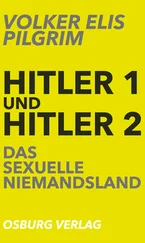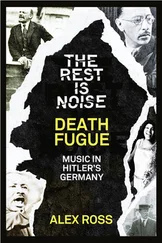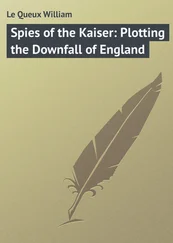23 Müller, Heer, 349.
24. Friedrich Wilhelm Heinz, qtd. in Hoffmann, Widerstand, 125. There are still a number of gaps in the literature on the so-called September plot and especially on the Heinz task force.
25. Gisevius, Ende, 332.
26. Krausnick, “Vorgeschichte,” 345.
27. Gisevius, Ende, 340.
28. Friedrich Hossbach, Zwischen Wehrmacht und Hitler, 1934-1938 (Wolfenbüttel and Hannover, 1949), 136.
29. Gisevius, Ende, 350.
30. Ivone Kirkpatrick, Im innern Kreis: Erinnerungen eines Diplomaten (Berlin, 1964), 462; see also Paul Schmidt, Statist auf diplomatischer Bühne, 1923-1945 (Bonn, 1950), 409.
31. Kordt, Akten, 262.
32. William L. Shirer, The Rise and Fall of the Third Reich (New York, 1959), 399.
33. Helmuth Groscurth, Tagebücher eines Abwehroffiziers, 1938-1940 (Stuttgart, 1970), 35. Contrary to the widespread assumption, the brothers must have met not in mid-September but on the evening of September 27. In the middle of the month the actions of the task force had not yet been decided on in detail, if the dates we have are accurate. On the other hand, if we accept the later date, it is difficult to understand why Groscurth said that Hitler would be arrested “tonight,” since the deadline would not have been reached until the next day at 2:00 p.m. In either case there was probably a lapse of memory. The evening of September 27, however, seems the likeliest date.
34. Gisevius, Ende, 360; see also Kordt, Akten, 270-71. Brauchitsch himself stated after the war that he never intended to issue orders for a coup and even denied that Halder, Witzleben, or anyone else ever approached him with plans to overthrow Hitler. See Hoffmann, Widerstand, 128, and the related note.
35. Gisevius, Ende, 169.
36. Qtd. in Fabian von Schlabrendorff, Offiziere gegen Hitler (Frankfurt and Hamburg, 1959), 169.
37. Le Testament politique de Hitler, ed. Hugh R. Trevor-Roper (Paris, 1959), 118-19. For Schacht’s statement, see Prozess gegen die Hauptkriegsverbrecher vor dem Internationalen Militärgerichishof Nurnberg, 14 November 1945-1. Oktober 1946 (Nuremberg 1949), vol. 13,4.
38. Gisevius, Ende, 362.
39. Hassell-Tagebücher, 71 (entry of Dec. 18, 1938). For Halder’s comment see Krausnick, “Vorgeschichte,” 370.
40. Qtd. in Schlabrendorff, 168-69.
41. Gisevius, Ende, 362; see also Rothfels, Opposition, 91.
42. Hoffmann, Widerstand, 317-18 and 50 (for Romer).
43. Hildegard von Kotze, ed., Heeresadjutant bei Hitler, 1938-1943: Aufzeichnungen des Majors Engel (Stuttgart, 1974), 39.
1. Speech on February 10, 1939, in the Kroll Opera House before the army group commanders. See Klaus-Jürgen Müller, Das Heer und Hitler: Armee und nationalsozialistisches Regime, 1933-1940 (Stuttgart, 1969), 379ff.
2. Müller, Heer, 271. “Red pants” refers to the red stripe on the trousers of members of the general staff. For the quotation from Jodl that follows, see 382. In the interrogations conducted by the Gestapo after July 20, 1944, Fritz-Dietlof von der Schulenburg pointed to the Fritsch affair as the beginning of the division in the officer corps; see Archiv Peter, ed., Spiegelbild einer Verschwörung: Die Kaltenbrunner-Berichte über das Attentat vom 20. Juli 1944 (Stuttgart, 1961), 273-74.
3. For Keitel, see Hans Bernd Gisevius, Bis zum bittern Ende (Zurich, 1954), 39-40. For Manstein and Guderian, see Fabian von Schlabrendorff, Offiziere gegen Hitler (Frankfurt and Hamburg, 1959), 99-100. Reichenau’s earlier disparagement of Beck is another example. Similarly, General Fritz Fromm, who played an inglorious role on July 20, 1944, recorded in his army diary Halder’s thoughts about a coup in the fall of 1939 (Harold C. Deutsch, Verschwörung gegen den Krieg: Der Widerstand in den Jahren 1939-1940 [Munich, 1969], 226-27).
4. Helmut Krausnick, “Vorgeschichte und Beginn des militärischen Widerstandes gegen Hitler,” Die Vollmacht des Gewissens, vol. 1 (Berlin and Frankfurt, 1960), 373.
5. Krausnick, “Vorgeschichte,” 373; see also Erich Raeder, Mein Leben (Tübingen, 1956-57), vol. 2, 133ff
6. Christian Müller, Oberst i.G. Stauffenberg: Eine Biographie (Dusseldorf, 1970), 148; see also K.-J. Müller, Heer, 387.
7. Galeazzo Ciano, Tagebücher, 1939-1943 (Bern, 1946), 225. For the confused feelings of the opposition, see the comments of Eduard Wagner in Müller, Heer, 389.
8. This to the former Austrian minister Claise von Horstenau, qtd. in Ulrich von Hassell, Die Hassell-Tagebücher, 1938-1944: Aufzeichnung vom anderen Deutschland, ed. Friedrich Hiller von Gaertingen, rev. and exp. ed. (Berlin, 1988), 59 (entry of Oct. 15, 1938).
9. A total of six versions of this address have been preserved. Although differing in emphasis, they convey the same basic message. The version quoted here can be found in Prozess gegen die Hauptkriegsverbrecher vor dem Internationalen Militärgerichishof Nürnberg, 14 November 1945-1. Oktober 1946 (Nuremberg, 1949), vol. 26, PS-798 (part 1) and PS-1014 (part 2) For the atmosphere of the meeting, see Halder’s remarks in Krausnick, “Vorgeschichte,” 381.
10. Franz Halder, Kriegstagebuch: Tägliche Aufzeichnungen des Chefs des Generalstabs des Heeres, 1939-1942, 3 vols. (Stuttgart, 1962-64), vol. 1, 34. For Halder’s comments to Henderson, see Krausnick, “Vorgeschichte,” 377.
11. Gisevius, Ende, 401ff. For Oster’s directions to the members of Heinz’s task force, see Peter Hoffmann, Widerstand, Staatsstreich, Attentat: Der Kampf der Opposition gegen Hitler, 3rd ed. (Munich, 1979), 142.
12. Nikolaus von Vormann, Hitler’s OKH liaison officer, qtd. in Müller, Heer, 120.
13. Qtd. in Müller, Heer, 419. I am also grateful to Müller for pointing out that this was just the situation the conspirators had been waiting for.
14. Gisevius, Ende, 408.
15. Müller, Heer, 425.
16. Helmuth Groscurth, Tagebücher eines Abwehroffiziers, 1938-1940 (Stuttgart, 1070), 201 (entry of Sept. 8, 1939); see also Martin Broszat, Nationalsozialistische Polenpolitik, 1939-1945 (Stuttgart, 1961), 28.
17. Note on the documents by Canaris on Sept. 14, 1939; qtd. in Müller, Heer, 128.
18. See Hans-Adolf Jacobsen, 1939-1945: Der zweite Weltkrieg in Chronik und Dokumenten (Darmstadt, 1961), 607. See also Count Romedio Galeazzo von Thun-Hohenstein, Der Verschwörer: General Oster und die Militäropposition (Berlin, 1982), 143.
19. See Hitler’s Secret Book (New York, 1962), with its continual criticism of the Prussian and bourgeois-nationalist policy toward Poland under the kaisers. The so-called Table Talk (London, 1953) also contains voluminous material on this topic.
20. Manfred Messerschmidt, “Militärische Motive zur Durchführung des Umsturzes,” Der Widerstand gegen den Nationalsozialismus: Die deutsche Gesellschaft und der Widerstand gegen Hitler, ed. Jürgen Schmädecke and Peter Steinbach (Munich, 1986), 1023.
21. Prozess, vol. 26, PS-864, 381-82.
22. Hildegard von Kotze, ed., Heeresadjutant bei Hitler, 1938-1943: Aufzeichnungen des Majors Engel (Stuttgart, 1974), 68 (entry of Nov. 18, 1939).
23. This according to Colonel (later General) Eduard Wagner, who was already beginning to draft plans for martial law, and Quartermaster General Tippelskirch; see Groscurth, Tagebücher, 231 (entry of Nov. 14, 1939). For Blaskowitz’s report to Brauchitsch, see Groscurth, Tagebücher, 426.
Читать дальше
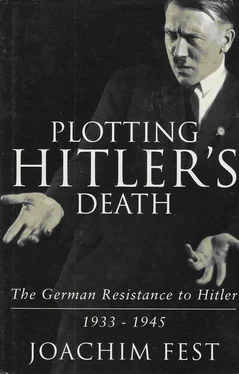
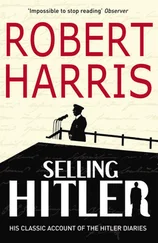
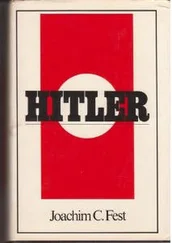
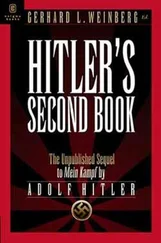
![Traudl Junge - Hitler's Last Secretary - A Firsthand Account of Life with Hitler [aka Until the Final Hour]](/books/416681/traudl-junge-hitler-s-last-secretary-a-firsthand-thumb.webp)

